Haute couture represents the very pinnacle of French style and savoir-faire. Such is its exclusivity, that only a handful of houses are granted membership by the Fédération de la Haute Couture et de la Mode each year. Naturally, this makes for some of the most opulent runway spectacles of the season – dwarfing show sets, star-crammed front rows – but it also represents a chance to celebrate the poetry of fashion and dressmaking, with each hand-crafted garment often taking hours and hours of work to perfect.
So far, this season has been typically transporting. At Chanel, it began with a lost button as Virginie Viard took us down a rabbit hole of confections inspired by the romance of dance, while at Dior Maria Grazia Chiuri presented a melange of richly crafted fabrics backdropped with a set by artist Isabella Ducrot. Meanwhile, at Alaïa, Pieter Mulier opened up the doors to his store for a tight-knit show – an expression of intimacy from the always-emotive designer.
Reporting from Paris, here is the very best of Haute Couture Week S/S 2024, as it happens.
The best of Haute Couture Week S/S 2024
Valentino
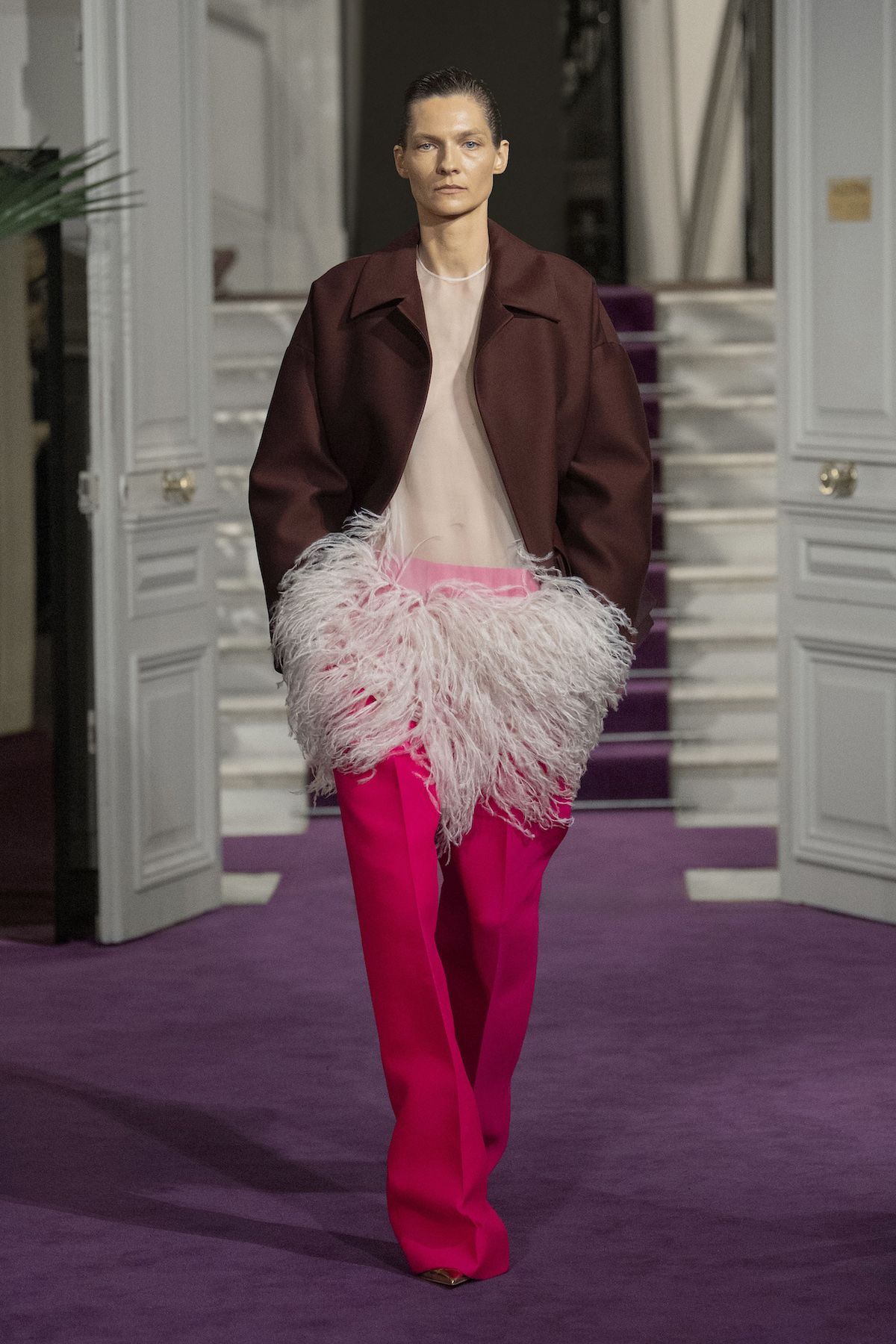
Valentino Haute Couture S/S 2024
(Image credit: Courtesy of Valentino)
Pierpaolo Piccioli titled his latest haute couture collection for Valentino ‘Le Salon’ – an ode, the designer said, to the vaunted salons of Paris’ maisons de couture, ‘the habitat of haute couture – a space of expectation and wonder.’ As such, he chose Valentino’s own haute couture salon to show the collection, a series of gilded rooms in the house’s headquarters on Place Vendôme. It spoke of Piccioli’s desire the return to the ‘timeless essence of haute couture’, its spiritual home, a space of both craft and imagination.
But if this marked a return to tradition – historically, couture collections were shown to clients in such salon spaces – Piccioli nonetheless imbued his haute couture creations with a sense of modernity and ease. Silhouettes were largely languid and unrestricted, while a series of tailored jackets and overcoats, worn with gently flared trousers and plunging vest tops, suggested riffs on everyday style (albeit in luxurious manner). Elsewhere, flourishes of decoration were an ode to craft: whether bouncing plumes of feathers, metallic petals which bloomed across sweeping opera coats, or a series of garments made to evoke exotic skins and furs (the ‘fur’ was actually ‘rouleax’ of silk organza, or hand-cut sequins which evoked the scales of an alligator).
‘The salon here is not a stage, but rather a cultural milieu, to valorise craft, to celebrate the act of creation,’ said Piccioli, via the collection notes. ‘It is a place to bear witness to beauty, therefore to experience humanity. It is the heart of haute couture.’
Giorgio Armani Privé
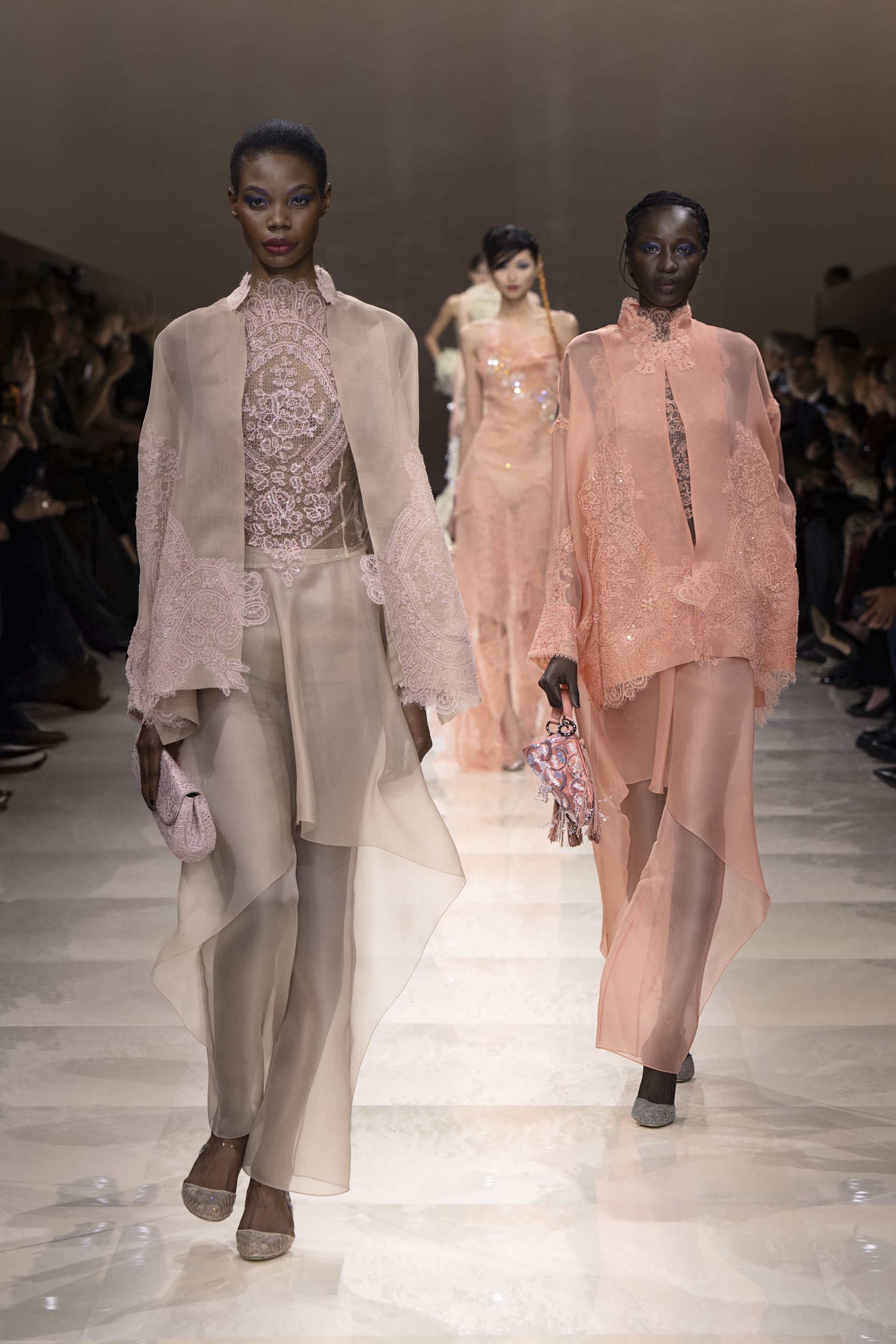
Giorgio Armani Privé S/S 2024
(Image credit: Courtesy of Armani)
It was a typically opulent outing from Giorgio Armani, whose Privé collections – according to the equally opulent front row, clad in last season’s runway looks – attract a phalanx of international clients devoted to the designer’s pursuit of beauty. He achieves it not just through the languorous line which also runs through his Emporio and Giorgio ready-to-wear collections, but in the extraordinary flights of embellishment and embroidery, alongside rich jacquards, lace, and the iridescent fabrics which here wrapped the body and glimmered in the light. Indeed, by way of inspiration points, Mr Armani simply said that this was him ‘indulging in unexpected bursts of creativity’, which set the collection’s freewheeling mood (dresses that erupted into fronds of tulle, enormous plissé hats). Like last season, the designer also noted an ‘imagined journey from west to east’, here emerging in richly embroidered kimono-like robes.
Alaïa
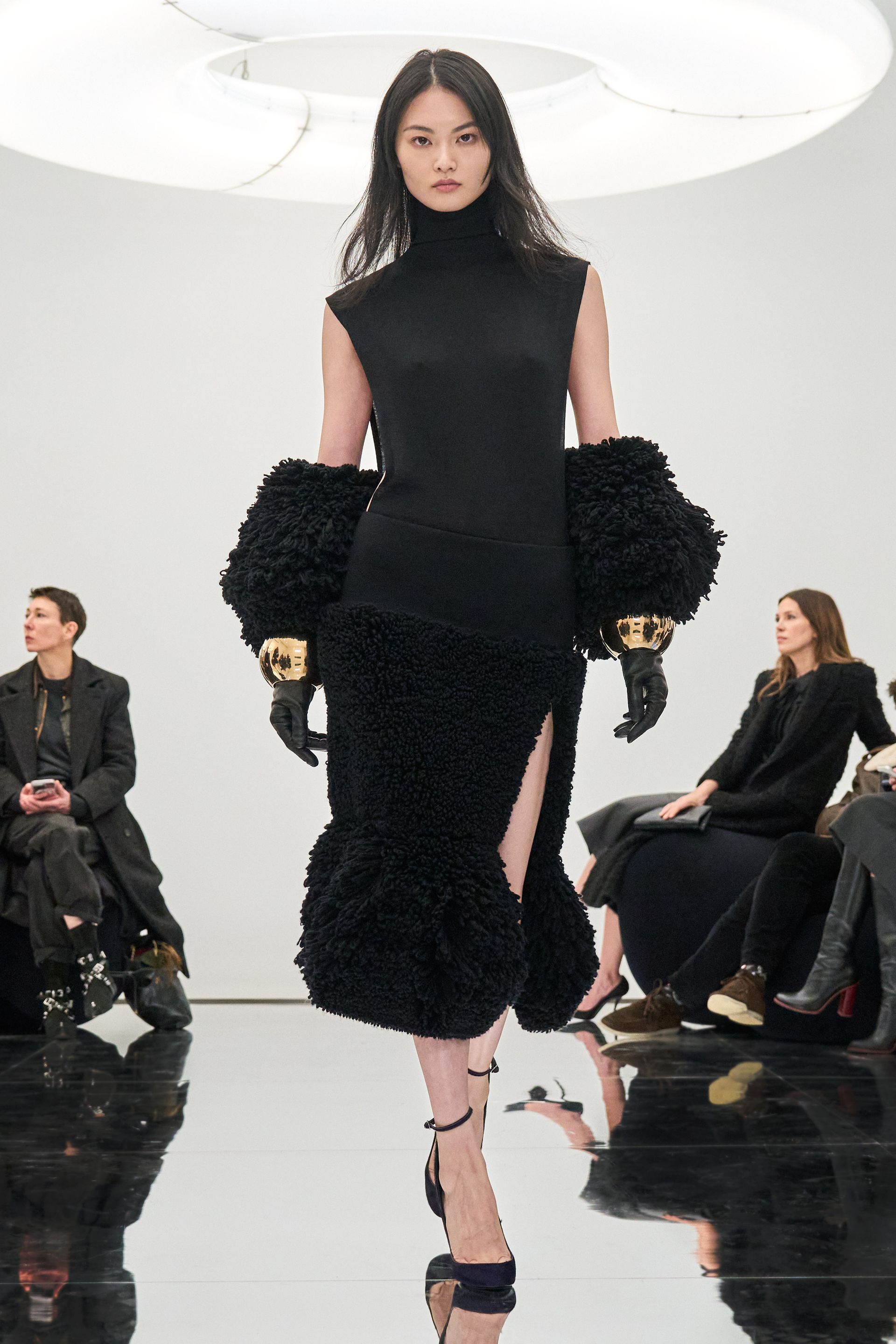
Alaïa Summer Fall 2024
(Image credit: Courtesy of Alaïa)
Every garment in Pieter Mulier’s latest collection was constructed from a singular piece of yarn – an extraordinary feat of engineering which pays ode to house founder Azzedine Alaïa’s own architectural approach to dressmaking. Mulier noted that this yarn – a merino wool developed over a year alongside the knitwear and textile suppliers who work with the house – signalled a mood of reduction, of stripping back fashion to its essence. This did not mean simplicity, as the fluttering mille-feuille of layers, looping, sculptural gowns, and pom-pom-like fronds which emerged from sleeves and hems, were anything but.
Rather, Mulier said he was thinking about ‘less meaning more – about intimacy, about reducing to an essence, about finding a freedom and invention in that. It is a decision, a choice, not to minimise but to focus, to expand possibilities.’ Indeed, the endlessly looping twists of yarn represented the feeling of intimacy at the heart of Alaïa, of ‘circles of friends, of chosen family, an idea essential to the essence of Alaïa. It was there with Azzedine always, like a heartbeat, and it remains,’ continued Mulier. The mood was reflected in the show itself, which was held in the Alaïa store on Rue de Marignan to just a handful of attendees, who balanced on Mollo sofas by Philippe Malouin to watch the show.
Chanel
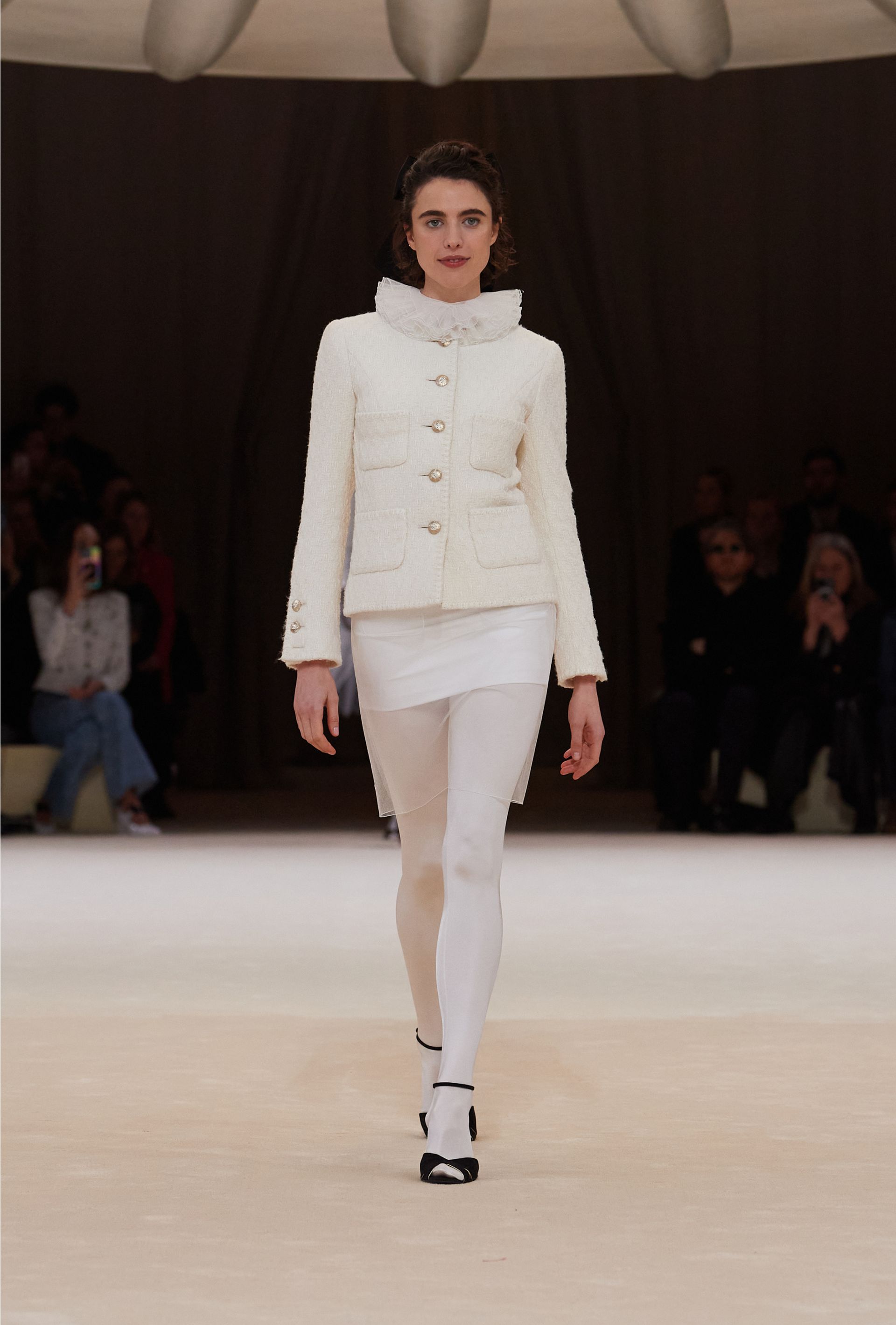
Chanel Haute Couture S/S 2024
(Image credit: Courtesy of Chanel)
A somewhat surreal opening video saw the actress Margaret Qualley losing a button from her Chanel jacket, before being aided by Naomi Campbell to find its replacement (cue the appearance of enormous spools of thread and gleaming scissors in the short, which was directed by Dave Free and scored by Kendrick Lamar). As if by magic – just after an enormous recreation of the signature Chanel button had descended from the ceiling of the Grand Palais Ephémère – Qualley had leapt out of the screen and onto the runway, sporting the collection’s opening look.
It heralded the start of a refreshing, romantic collection from Virginie Viard, who looked to the button as a symbol – the ‘jewels’ with which Gabrielle Chanel had adorned her original jackets, and treated always with the ‘utmost respect’. ’Chanel brings out emotions in me that I use for inspiration, collection after collection… my mission is to find new ways to tell its most beautiful stories,’ elaborated Viard, who used it as a jumping off point to explore the ’physical poetry’ of ballet and dance.
As such, the collection – which arrived in a sugared-almond palette of white and pale pink – was filled with flourishes that suggested both romance and movement, whether the fronds of tulle that emerged from the sleeve of a jacket or as a kind of pannier at the hip, or the layered body suits (on which extraordinary embellished bustiers sat) and white tights, which suggested the liberation of the dancer’s rehearsal room. ‘I often think about dance, it’s an important theme at Chanel,’ explained Viard. ‘The House is close to its institutions, to its choreographers and dancers, and we create costumes for the ballet. I have tried to bring together the power and finesse of bodies and clothes in a very ethereal collection, composed of tulle, ruffles, pleats and lace.’
Dior
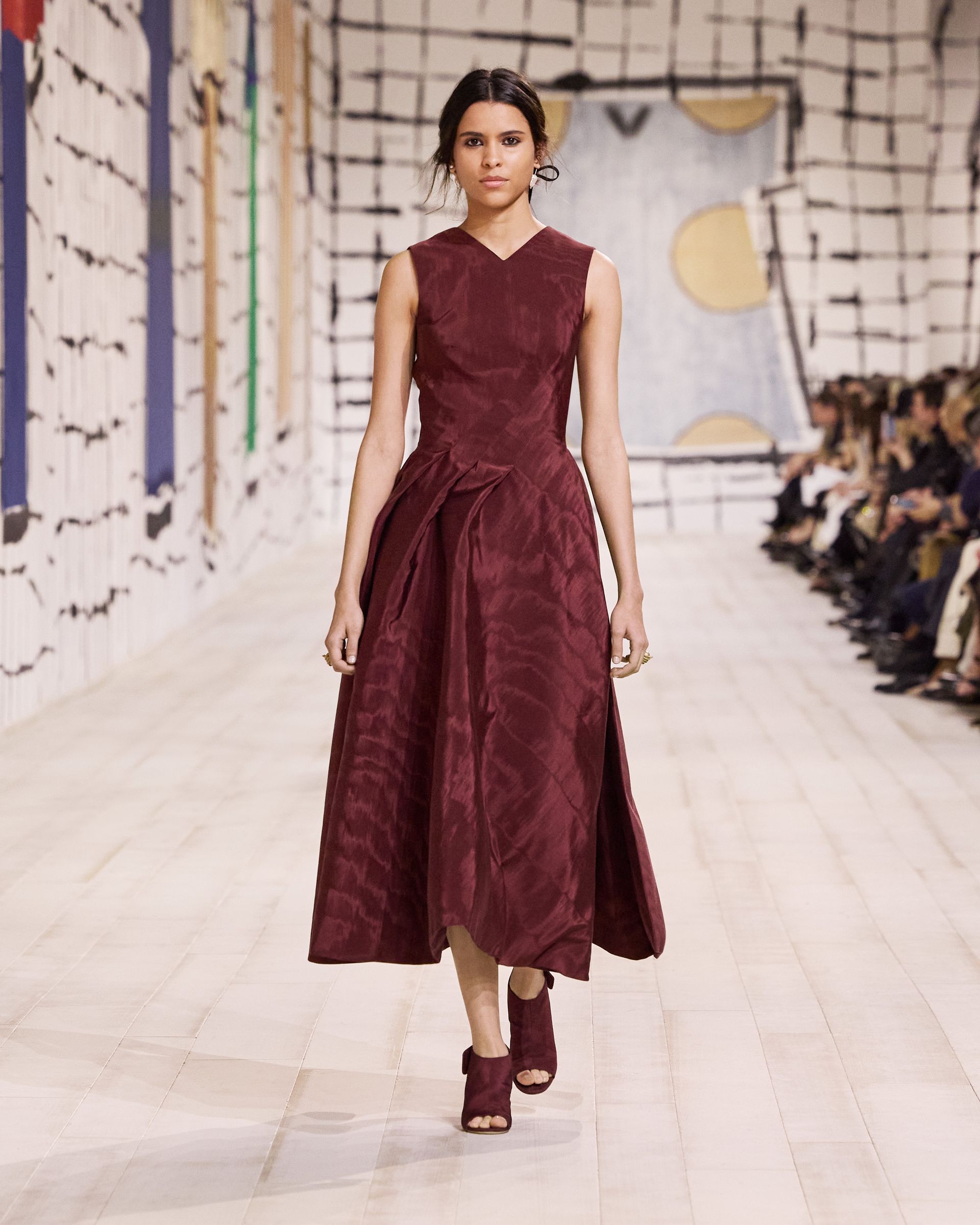
Dior Haute Couture A/W 2024
(Image credit: Courtesy of Dior)
Maria Grazia Chiuri largely eschewed strictly defined themes for an exploration of what the Italian designer called ‘aura’. It speaks to the mood she has conjured during her tenure at the house so far, where despite recalling moments from history – or indeed the house archive – she defined a distinct expression of contemporary femininity.
Here, the show was backdropped by a work by artist Isabella Ducrot titled Big Aura, a series of large-scale clothing silhouettes that in their construction recalled the warp and weft of cloth. Indeed, it was fabric – the medium of the couturier – which took centre stage here, with rich moments of moiré, meeting the sheen of iridescent fabrics and the lush textures of velvet. Of moiré – a fabric for which Christian Dior, she noted, had a particular infatuation – she said it ’unfurls over winter like a wave.’
For the silhouettes, Chiuri looked towards La Cigale, a dress that first appeared in Christian Dior’s A/W 1952 collection (there, it was also in moiré). A definitive Dior silhouette – narrowed at the waist and cantilevered at the hip to shape the posture – the strict line was reinterpreted with new ease by the designer, across gowns that wrapped around the body and gently nipped at the waist, or a series of hourglass tailored jackets worn with free-flowing plissé skirts.
Schiaparelli
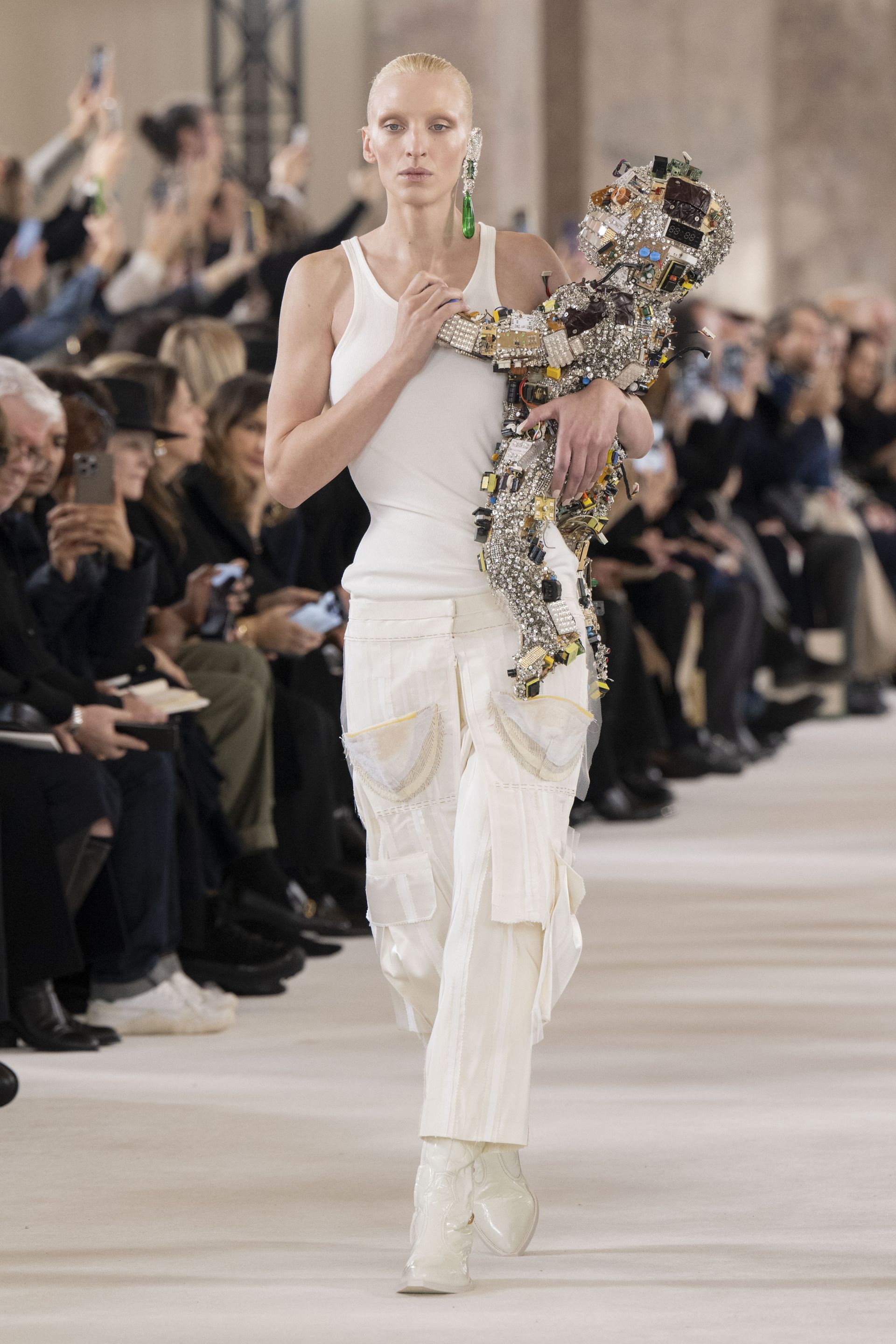
Schiaparelli Haute Couture S/S 2024
(Image credit: Courtesy of Schiaparelli)
Daniel Roseberry’s collections from Parisian couture house Schiaparelli have come to herald the arrival of the week in the city. And, they always have a star-studded guest list befitting the occasion (this season, Jennifer Lopez, Zendaya and Hunter Schafer all took their places front row). With Roseberry – who cut his teeth at Thom Browne, another designer fond of fantasy (and who made his haute couture debut in 2023) – you never quite know what to expect (an internet-ubiquitous S/S 2023 collection saw enormous replicas of animal heads used as adornment).
This season was no exception, with Roseberry presenting a cosmic collection inspired by outer space and sci-fi tropes – all the way down to a ’robo baby’ constructed from what appeared to be mounds of gleaming discarded tech (it was carried down the runway by model Maggie Maurer, who noted it was lighter than her own baby). A gown adorned with old mobile phones and compact disks had a similar effect. ’As art – and nature – teaches us again and again, the things and ideas that seem diametrically opposed to each other can also combine to make startling chimeras, objects composed of familiar parts that, when united, create something unexpected and new,’ explained the designer.
Elsewhere, gowns were cut with a typically sculptural line, whether richly embroidered and reaching high above the head on one side, or complete with enormous fan-like breastplates crafted from patchworked black lace. ’[It is] a series of profiles both familiar and not – part human, part something else,’ Roseberry continues. ‘And, therefore, totally Schiaparelli.’
Toteme
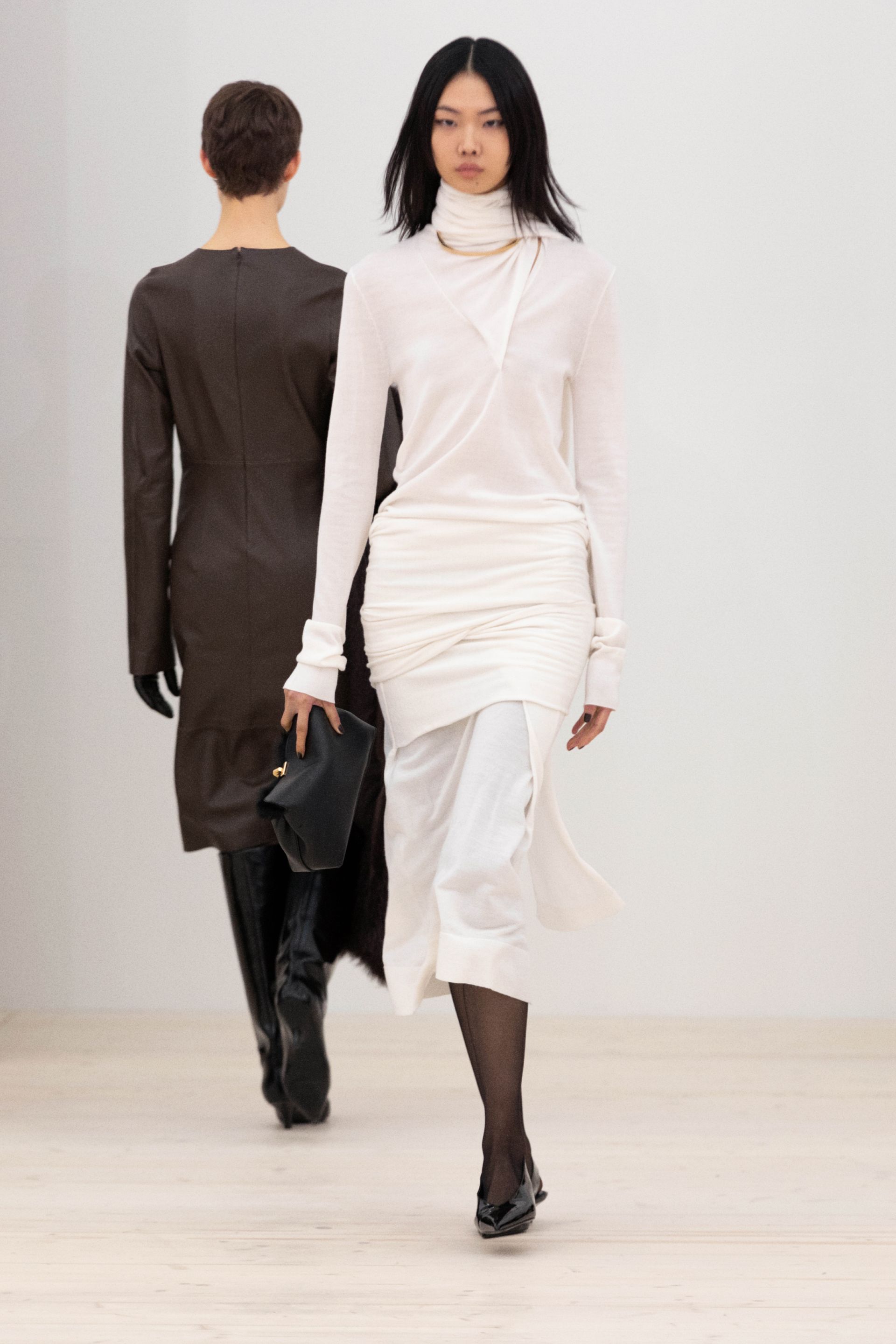
Toteme A/W 2024
(Image credit: Courtesy of Toteme)
Swedish fashion brand Toteme has been going from strength to strength in recent months, which culminated with the opening of a sleek new London outpost on Mount Street late last year (the latest in a slew of openings, which span New York, Shanghai, Seoul, and of course Stockholm). Choosing to show off-schedule at Haute Couture Week, founders Elin Kling and Karl Lindman invited an intimate gathering of press and associates to view the A/W 2024 collection on a stark white-backdropped runway, which recalled the 1990s runway shows that have no doubt been an inspiration to the pair’s stripped-back stylings.
Indeed, Kling (who is creative director) noted a honing-in on ’line, cut and shape’ in an astute collection that spanned gently tapered wool overcoats, featherweight knits which wrapped sensually around the neckline (a silhouette which reappeared later in sinuous dresses), and a beautifully cut slew of gowns that closed the show, either hovering gently off the shoulder or knotted and adorned with crochet flowers. ‘Designed for real-life situations, the collection comprises a highly curated edit that explores and consolidates the Toteme codes,’ the designer noted. ‘Ultimately, the collection comprises the perfect combination of styles for a refined look.’